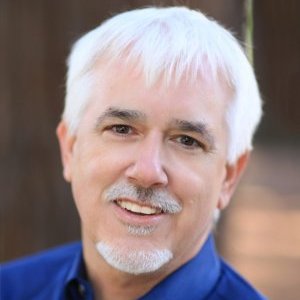Distributed Ledgers, the Next step in Patient Generated Health Data (PGHD) Including Environmental Data
Soon we will be able to access thousands of datapoint into our lives, many will reflect our environment and health. The HHS Idea Labs held a Entrepreneur-in-Residence webinar on December 13, 2016, for recruiting an software architect to assist the National Institute for Occupational Safety and Health (NIOSH) in collecting employment data as it pertains to a persons health. They wish to share/store the collected data in the EHR. Onerous at best, because most EHR today do not have API for uploading data and HL7 standards do not currently provide for discreet PGHD data. Why, environmental data or other types of data that affect or is collected by the patient isn't considered clinical. I am not saying this is a bad thing, for in data design, it is best to segregate data, especially large data sets.
 Jeff BrandtThe webinar panel mentioned FHIR, the REST API from HL7. Currently FHIR datagrams are based on HL7 V2 which is not designed for PGHD (Patient Generated Health Data). We are trying to use old technology and clinical standards for collecting and storing PGHD and IoT data . If we are bound to the aging EHR design and HL7 clinical protocols, it will be impossible to develop a solution that will support the ever growing data lake, which is being collected.
Jeff BrandtThe webinar panel mentioned FHIR, the REST API from HL7. Currently FHIR datagrams are based on HL7 V2 which is not designed for PGHD (Patient Generated Health Data). We are trying to use old technology and clinical standards for collecting and storing PGHD and IoT data . If we are bound to the aging EHR design and HL7 clinical protocols, it will be impossible to develop a solution that will support the ever growing data lake, which is being collected.
We need a system that can collect, store and analysis IoT data or data from anywhere and anything that come in contact with the patient. A distributed, secure solution, one which provides transparency and is patient controlled. The solution is available now, the distributed Ledger, the database that support Blockchain. Distributed ledgers store transaction data and distributed database like Cassandra store the payload. This solution already provides a standard for sharing, securing and providing transparency for transactions such as data events. This solution would allow EHRs, the client, to access the patient's data anywhere and anytime, using the credentials provided by the patient. All systems that affect or interact with a patient health could have permission to write into the ledger...
- Tags:
- Application Programming Interfaces (APIs)
- Blockchain
- Cassandra
- data collection
- data security
- Department of Health and Human Services (HHS)
- Distributed Ledgers
- electronic health records (EHRs)
- environmental data
- Fast Healthcare Interoperability Resources (FHIR)
- HHS Idea Labs
- HL7 standards
- Internet of Things (IoT)
- Jeff Brandt
- Ledger
- National Institute for Occupational Safety and Health (NIOSH)
- patient control
- patient generated health data (PGHD)
- patient privacy
- REST API
- software architect
- transparency
- Login to post comments